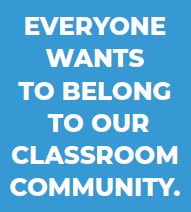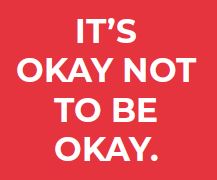Breakthroughs: Every Student Should Feel Noticed—Recognize, Accept, and Share Hardships

Casey Keyser is a third grade teacher at Butterfly Ridge Elementary in Frederick County and an alumni of the Vanguard Teaching Program. She is is a 2021 finalist for the NEA Foundation Horace Mann Award for Excellence in Teaching and is the owner of the education resource blog, Fair Winds Teaching.
When I stepped foot in my classroom for the first time in months due to the circumstances surrounding coronavirus, I burst into tears. As I glanced up to see my whiteboard still read March 13th, 2020, a flood of emotions surged through me. I felt it … all of it.
I try to give myself time and acceptance to process any feelings I’m navigating, so I also want to be sure I teach my students the same—that they’re allowed and encouraged to express themselves. Our goal should never be to stop a child from crying. It so dangerously teaches a child that what he or she is experiencing isn’t important and that their emotions are too uncomfortable for us to handle. Instead, children benefit from having a safe space to express their emotions and have them validated.

Virtual learning has been hard. Let me say that again … this has been hard, not only for the educators, but for the students and their families. Our #1 job and mission as educators hasn’t changed though: make connections and build relationships with students so they are able to access learning—even virtually.
Unfortunately, I have heard adults say to students, “When you grow up, you’ll understand,” and I couldn’t disagree more. Young students understand now. Some of our students have done harder things in life than I, as an adult, could ever imagine. We can’t pretend that they will learn how to understand and regulate their emotions when they grow up. They are ready for it now and they will be able to handle situations better if they learn early.
To continue building relationships during virtual learning, make sure every student feels noticed. Use the student’s name when they enter your virtual classroom, use it when they post in the chat box, when they submit an assignment, and when you say goodbye each day.
Students who feel noticed, feel like they belong, and belonging to your classroom might be the only thing they feel connected to. Be patient, as the kids who need the most love will ask for it in the most unloving ways.

Don’t be afraid to ask them what isn’t going well. It can’t always be rainbows and sunshine. The opening activity Roses and Thorns is a great way to ask your students what is going well with them and what might not be going so great. Additionally, if students only hear the good things, they won’t have a sense of reality that others can be going through difficult times too.
I also never tell my students, “It’s going to be okay.” Because I can’t guarantee that they will not face challenges in life—and most of them already have. What I do tell them is: “You can do hard things. Each of you can overcome something hard. And you don’t have to do it alone.” I encourage educators to acknowledge to students that you recognize their emotions and that you are there for them when they are ready to talk.
The social and emotional well-being of a student is the most important part of learning. If a student doesn’t feel comfortable and loved in their environment, learning and growth cannot take place. As you navigate through virtual learning, remember that you are not alone in these difficult and unique times. It is okay to feel all the ups and downs. If we allow ourselves and our students to feel our emotions, then we can all better address and manage them.

